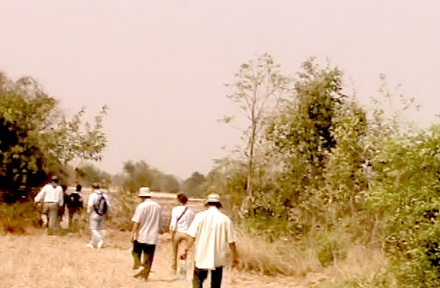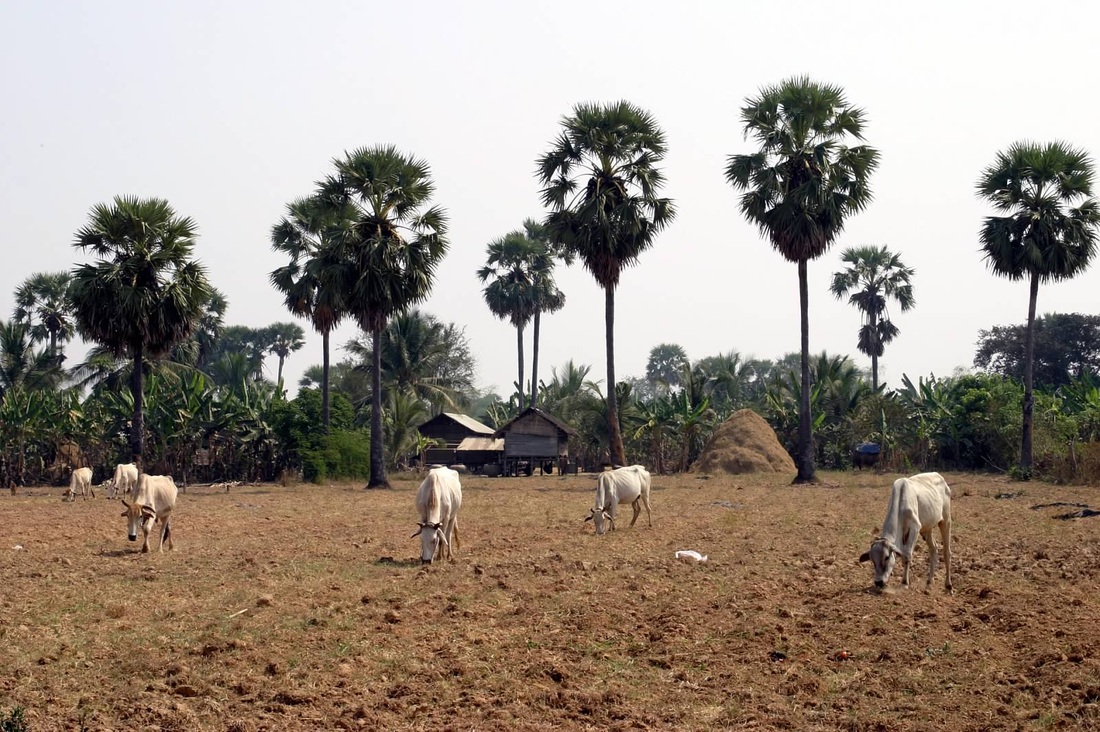| BANYAN BLOG |
banyan blog
|
Oak-a-bao, Battambang
February 14, 2004 Over 20 years had passed since my father buried my brother, Sakeda, and my grandparents, Kong Sreng and Yey Eng in Battambang. Before the Khmer Rouge, family’s of the deceased conducted intricate funeral ceremonies for their loved ones in traditional Cambodian culture. However, the Khmer Rouge did not allow any mourning or attachments to family. Tradition and culture was destroyed and humanity along with it. My father had to bury his son and parents-in-law without any Buddhist ceremonies, without any monks to help guide them into the next life. There was nothing he could do to commemorate their death or provide any offerings to them in the afterlife. Instead, he had to bury his family unceremoniously and carry on as if nothing happened. My uncle, Pa Om, felt he never completed his duty as the filial son in his parents’ death. Even though decades had passed, finding these bones meant they could finally give the proper rituals for their loved ones. More so, they could find peace and closure through this process. My father thought if he ever had the chance to go back to Oak-a-Bao, he was sure he could find the bones to give them a proper burial. For years, he also wanted to go back but was concerned about the safety. My uncle Om Ngat, who had lived in Battambang since 1979, was uncertain whether it was still safe to go. Pa Om was determined with or without anyone’s help. Finally they all decided they would take the chance and go together.
2 Comments
 Finding the graves back in Battambang. Feb 14, 2004. © Banyanblog. Finding the graves back in Battambang. Feb 14, 2004. © Banyanblog. The sun was beating down on us that long February afternoon in 2004. Even though it was technically the “cool season” in Cambodia, being out in the open and dry fields for hours took a toll on our bodies. We were thirsty, hot, sweaty and disoriented. I wondered, what are we even doing here? Then I looked around and realized the crossroads of fate was standing right in front of me. We were meant to be here. Destiny brought me back to Battambang, to Oak-a-bao, the Khmer Rouge camp I was born in over 20 years later. But seeing my birthplace was not the purpose of our visit. We were there to find the burial site of my family members who had died during the “bad times”. I will never forget my first visit back to Battambang, our visit back to Oak-a-bao. We were all looking for closure, all in our own way. The Verdict
Today, the Extraordinary Chambers in the Courts of Cambodia (ECCC), otherwise known as the Khmer Rouge Tribunal (KRT) presented the verdict to two of the highest-ranking surviving Khmer Rouge leaders. Noun Chea, also known as Brother Number 2, and Khieu Samphan, the Head of State for Democratic Kampuchea, were found guilty by the international tribunal for crimes against humanity. They both received a life sentence. Under their leadership, they were responsible for the deaths of over 1.7 million people who died at their hands by starvation, execution and rampant disease. Hearing this verdict and their crimes is painful for many who wanted see something more. The judgement today stripped the victims, living and dead, the right to see these leaders suffer as they did. Yet despite the angry emotions I felt today, I also remembered a different kind of Khmer Rouge leader, one who risked his life to save our family. |
FEATURED INMOST POPULARThe Journey Archives
October 2022
follow |
© banyan blog 2013-2022
All Rights Reserved
All Rights Reserved



